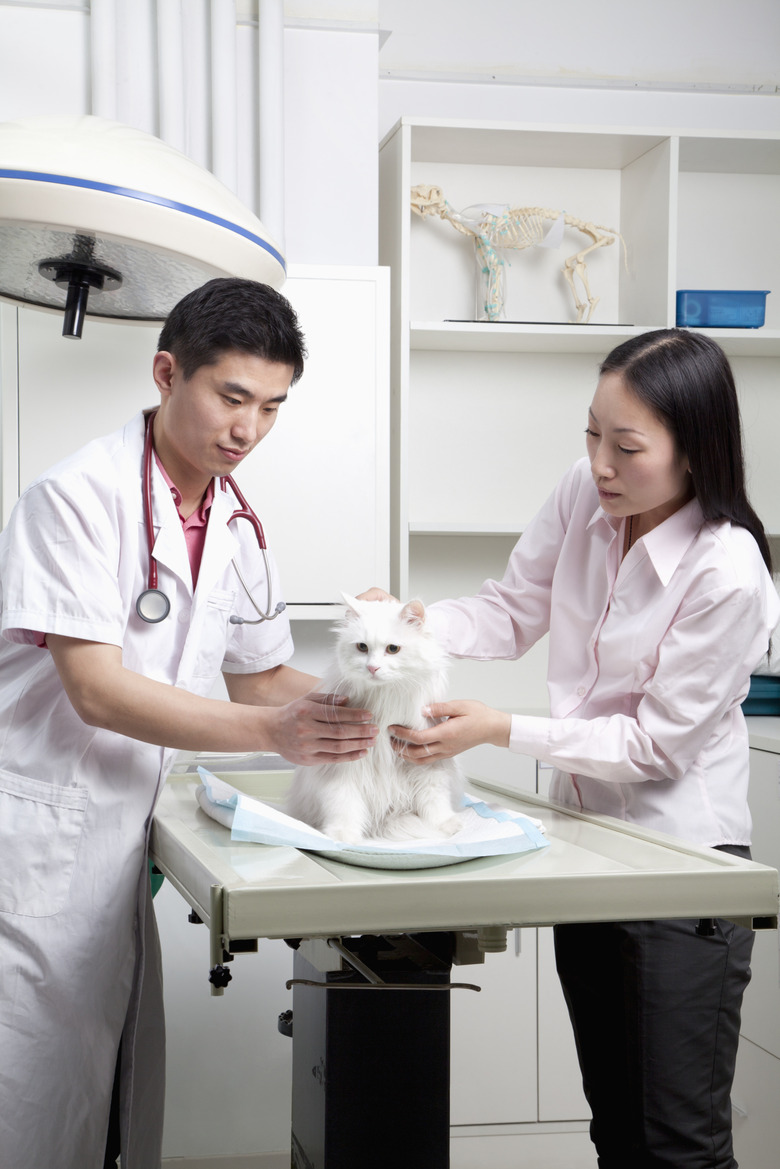How To Treat Raw Skin Problems In Cats
Raw skin in cats may require long-term attention. Identifying the reason for raw skin can be difficult; it requires careful observation. Various treatment processes will heal the skin, but you need to correct the behavior that causes raw skin for the treatments to be effective. Consult a veterinarian to deal with both the raw skin and the behavior behind it.
Identify the Cause, Stat
Identify the Cause, Stat
Watch your cat closely and assess his environment to determine the cause of his raw skin. Look closely at the raw area and the skin surrounding the raw area for clues. Common causes include: Stress and anxiety Heat Insect bites Rash Skin disease Wounds * Excessive grooming
Correct the Issue
Correct the Issue
After you have diagnosed the problem, determine the best treatment and correct any causes for the raw skin. Your vet will take the lead in behavior modifications and medicinal treatment. Practical measures your vet recommends may vary, but the following are some examples: Making a dietary change for rashes and allergic reactions. Providing a cool resting space during periods of hot weather. Cleaning your cat's living areas to ensure he has a safe place to recover. Removing possible causes of stress like dogs and other cats who do not get along with the cat. Isolation from stress provides relief and time to recover.
Home Remedies
Home Remedies
Over-the-counter treatments are readily available for skin rawness and the conditions that cause it. Find a cat-safe medicated shampoo for flea infestation; for raw skin around a wound or scrape, apply triple antibiotic ointment. Use Vasoline or Bag Balm to treat a simple hot spot that is dry and raw.
The ointments will lubricate and protect a raw area and encourage fast healing. As long as your vet approves of their use, apply liberally several times daily to ensure the area is always covered with ointment.
Licking Issues
Licking Issues
Your cat may lick any treatment off the wound. Licking leads to hair loss and prevents raw skin from healing. Put a cone around the cat's neck to prevent constant licking. The cone is awkward and uncomfortable, but it will stop the licking and speed the healing process.
Professional Assistance
Professional Assistance
Basic home treatments are often sufficient, but prepare to visit a veterinarian if the skin does not heal. Your cat may have a skin disease or health issue that requires professional diagnosis and treatment.
Always check with your veterinarian before changing your pet's diet, medication, or physical activity routines. This information is not a substitute for a vet's opinion.
